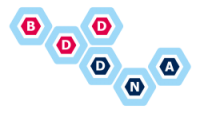Clear and Shared Understanding of Requirements
BDD promotes collaboration and communication among stakeholders, developers, testers, and business analysts. By using a shared language and structured scenarios, BDD helps ensure that all parties have a clear understanding of the project requirements. This shared understanding minimizes the risk of misinterpretation and reduces the gap between stakeholders’ expectations and the final product.
Focus on Desired Behaviour
BDD shifts the development focus from implementation details to the desired behaviour of the software. By describing the expected behaviour through user stories and scenarios, BDD guides the development process towards meeting specific business goals and user needs. This shift helps avoid unnecessary features or functionalities and ensures that the developed software aligns closely with the intended purpose.
Early Validation and Feedback
BDD encourages the creation of executable specifications that serve as living documentation of the software behaviour. These specifications can be automatically validated through automated tests, enabling early detection of issues or discrepancies. By receiving feedback early in the development cycle, teams can address potential problems promptly, improving the overall quality of the software.
Improved Test Coverage
BDD emphasizes the creation of automated tests that validate the behaviour of the software against the specified scenarios. This approach ensures comprehensive test coverage and reduces the reliance on manual testing, which can be time-consuming and error-prone. With BDD, teams can establish a suite of automated tests that cover different scenarios, increasing confidence in the software’s quality and reducing the risk of regressions.
Alignment with Business Objectives
By focusing on behaviour and user-centric scenarios, BDD ensures that the development process remains aligned with the project’s business objectives. The structured nature of BDD facilitates regular discussions with stakeholders to refine and prioritize requirements based on their business value. This alignment ensures that the development efforts are directed towards delivering the most impactful features and functionalities, enhancing the overall quality of the project.
Continuous Improvement
BDD promotes an iterative and feedback-driven development approach. As scenarios and requirements evolve, BDD allows teams to adapt and refine their approach accordingly. By continuously evaluating and improving the software’s behaviour through collaboration and feedback, teams can enhance the quality of the development process and deliver a product that better meets stakeholder expectations.
Conclusion
Adopting a structured development method like Behaviour-Driven Development (BDD) can significantly improve the quality of your development process and project outcomes. By promoting collaboration, focusing on behaviour, enabling early validation and feedback, improving test coverage, aligning with business objectives, and fostering continuous improvement, BDD empowers teams to deliver robust, reliable, and user-centric software solutions. Embracing BDD as a core development approach can elevate the quality of your projects and drive greater satisfaction among stakeholders and end-users alike.


